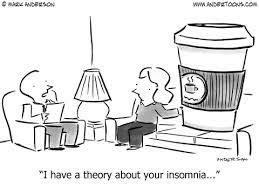Has falling asleep — and staying asleep — turned into a nightmare for you?
One way to reduce all that nighttime tossing and turning is through a counseling program that focuses on changing the very specific thoughts, behaviors, and beliefs that stand between you and a good night’s rest.
This kind of approach is known as cognitive-behavioral therapy (CBT), and it is widely used to treat depression and anxiety disorders. For those with chronic insomnia, CBT helps through a combination of education and practice exercises — not unlike homework assignments — designed to assist patients in identifying and avoiding the problematic beliefs and behaviors that keep them up all night.
Insomnia Keeping You Up at Night?
People with insomnia may have fallen into a pattern of using their time on the pillow to watch television, read, or plan their schedule for the next day. Over time, such patterns become habits, and lying in bed gradually becomes associated with wakefulness rather than sleep.
The April 11 issue of TheJournal of the American Medical Association contains a study done by a group of sleep doctors, researchers and therapists. During the course of their study, they worked with 75 patients diagnosed with chronic sleep-maintenance insomnia — the type of insomnia characterized by long periods of wakefulness after having initially fallen asleep. These people were treated with either CBT, a muscle relaxation program, or a “sham” treatment in which they were given appointments with a therapist but received no real therapy.
The participants were asked to keep a sleep diary diary, and the researchers also took note of the amount of sleep the patients actually got each night by using a device known as a polysomnograph that measures brain electrical activity during sleep.
The study showed that this treatment is very effective with sleep-maintenance insomnia, which is far more common than sleep-onset insomnia, in which the patient has difficulty falling asleep in the first place. Sleep- maintenance problems are most common in middle-aged and older adults.
Can’t Turn Your Mind Off at Bedtime?

The patients receiving CBT were given a combination of education, time-in-bed restrictions, and stimulus control. Stimulus control is designed to increase the stimulus value for sleep and eliminate the sleep-disruptive behaviors that have evolved over time.
People with insomnia often worsen their problems by thinking obsessively and negatively about their inability to sleep, says David Neubauer, MD, a sleep specialist at Johns Hopkins University School of Medicine in Baltimore who believes that CBT has a valid role in the treatment of sleeping disorders.
“This contributes to a vicious cycle of increasing distress about the insomnia,” Neubauer tells WebMD. “One of the aims of the cognitive-behavioral approach is to help people think more positively about their sleep and less negatively about their symptoms.”
CBT’s intense focus on specific thoughts and actions that make up a pattern of behavior can help people reverse the state of “hyperarousal,” or excitability, that insomniacs often feel when they are in bed, Neubauer says.
“A lot of time when people have insomnia they will stay in bed, frustrated by the fact that they are not able to sleep,” he says. “It is easy to see how that time in bed soon becomes associated with the state of being hyperaroused.”
The more time you spend agonizing about not being able to sleep, Neubauer says, the more likely that will be your pattern every time your head hits the pillow — even though you may be desperately in need of sleep.
Retraining the Mind for Sleep
During the study mentioned above, subjects were trained not to think and worry while lying in bed, not to read or watch television in bed, and never to lie in bed for long periods. They are told to avoid daytime napping and to establish a standard rising time.
Time-in-bed restrictions are designed to reinforce the stimulus control by helping patients learn to use the bed only for sex and sleeping, he says.
“A lot of people with insomnia are sleeping or nodding off at the dinner table or before bedtime, but as soon as they get in bed they are anxious,” Dr. Neubauer says.
But the best treatment for any particular individual with sleep problems will vary from person to person, and it’s too simplistic to say that CBT is right for everyone.
Some people will have insomnia that turns out to be caused by sleep apnea — a disorder in which the breathing apparatus stops momentarily, causing the sleeper to awaken. Also, insomnia may be related to side effects of medication or to an underlying major depression that requires medication.
“We believe everybody who has difficulty with insomnia should be evaluated, and consider a wide range of possible causes and treatments,” Neubauer says. “Everyone needs to have individualized treatment.”
What to Do Now?

What many do not know when discovering sleep abnormalities is the psychological side of sleep. Many think it is snoring or staying up too late, but it actually commonly stems from something deeper. At Alaska Sleep Clinic, we are fortunate to have Dr. Angie Randazzo on staff who for more than 25 years has treated all types of sleep disorders, including insomnia, delayed sleep phase, sleep apnea, shift work and daytime fatigue/sleepiness, using behavioral techniques.
Dr. Randazzo’s primary research interests include insomnia, clinical pharmacology, sleep deprivation and the relationship of sleep and behavior. Specifically, “insomnia is a common sleep disorder that can make it hard to fall asleep, hard to stay asleep, or cause you to wake up too early and not be able to get back to sleep.”
Impaired sleep can seriously affect your quality of life and productivity. Behavioral changes implemented under the guidance of an experienced clinician can improve sleep quality and help you feel more alert and functional on a regular basis. Sleep is a third of your life – make it count!
Alaska Sleep Clinic is the most comprehensive multi-site sleep lab in Alaska with clinics in Anchorage, Wasilla, Fairbanks, and Soldotna and we continue to expand our services to those with sleep disorders. No other CBT sleep specialist provides care in the state of Alaska with Dr. Randazzo available to Alaska Sleep Clinic patients via telemedicine, through SleepTM.











